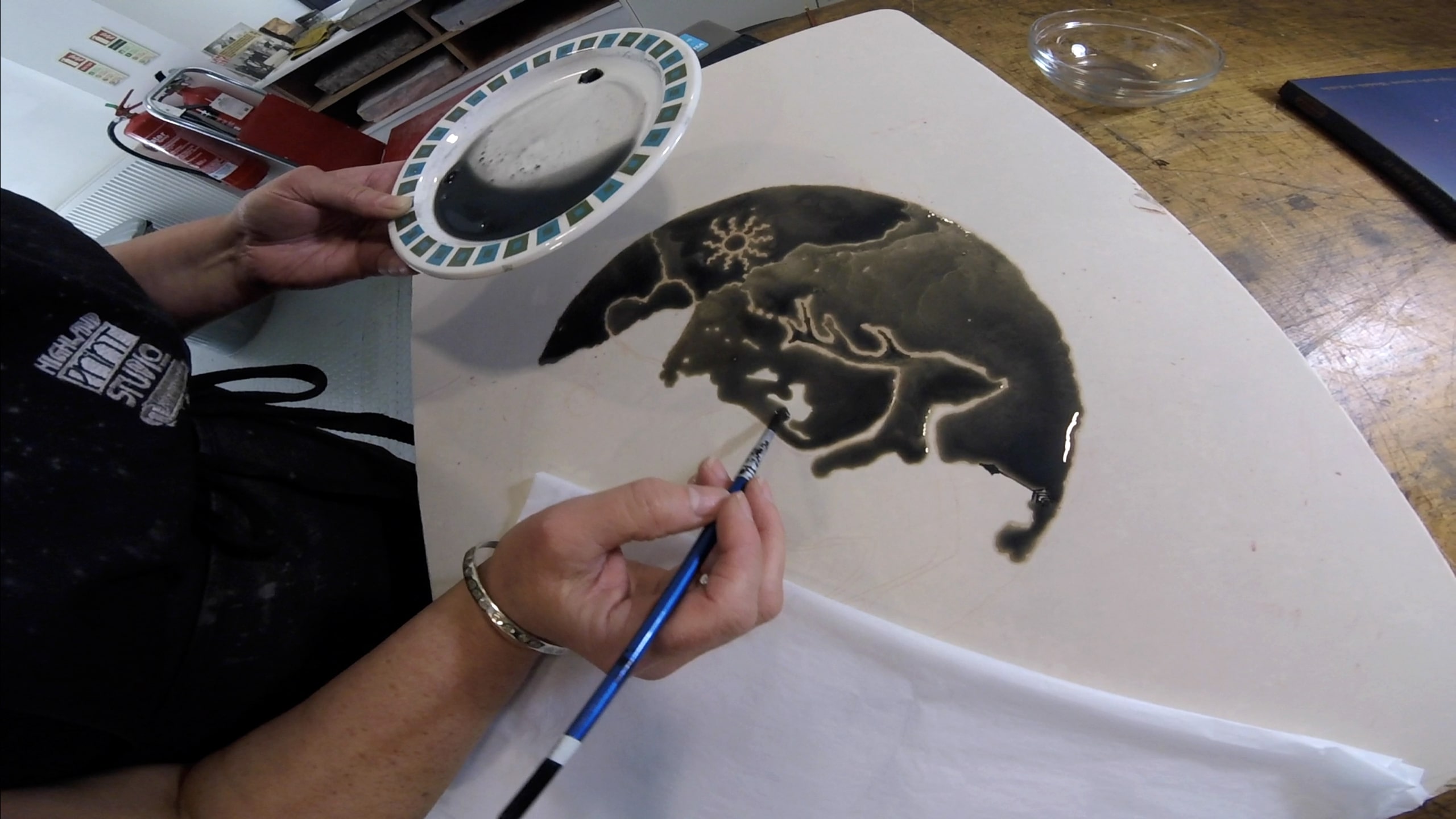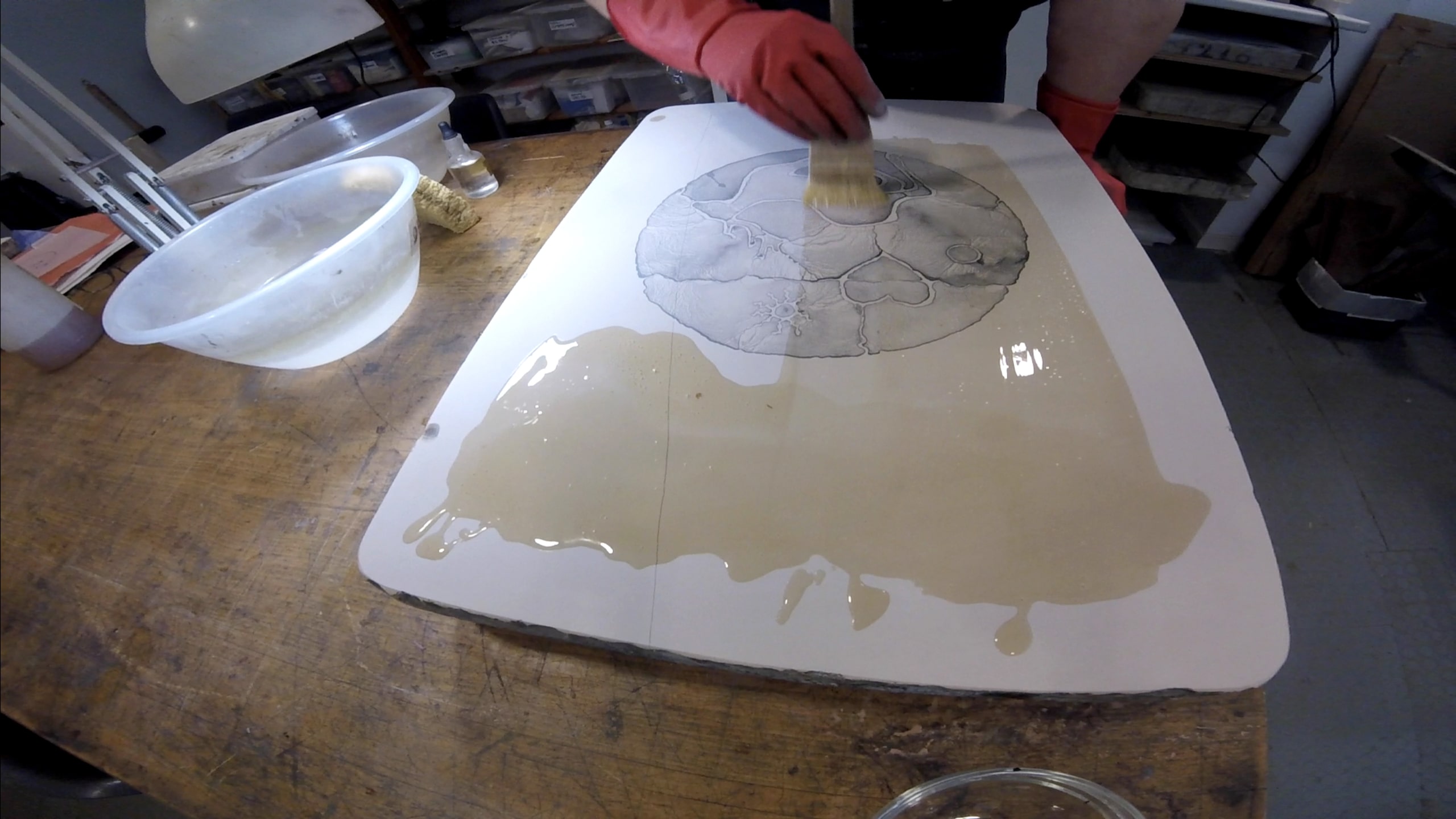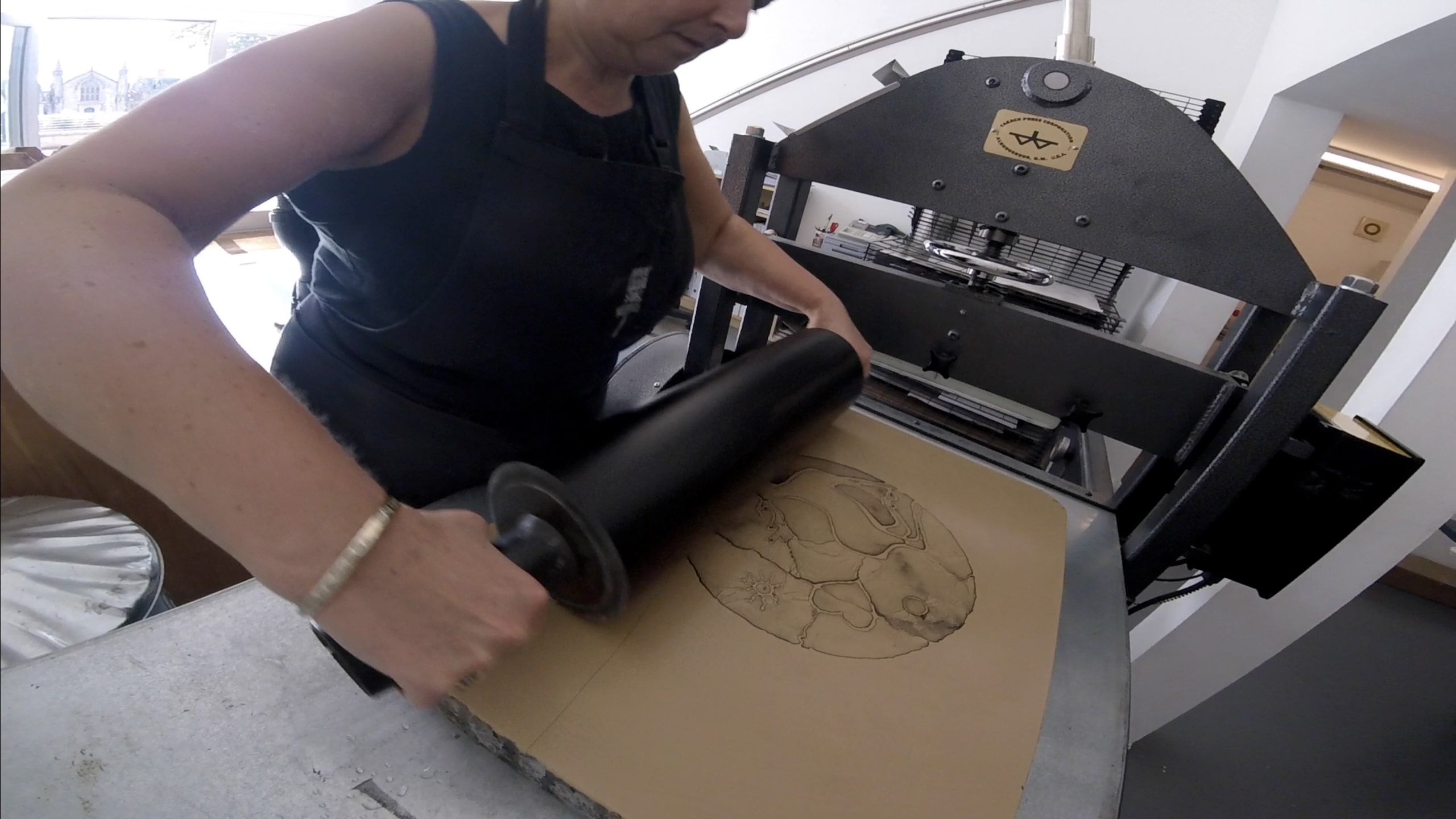
Stone Lithography
Lithography: one of the few times in life where rejection is a positive thing. The technique of lithography is based on the principle that grease and water don’t mix. The artist creates an image using greasy materials. When the stone is ready for printing, the surface is dampened so it can be inked in greasy litho ink, then printed.

Process one
The image is drawn onto the stone using a range of materials with a high grease content. These come in the form of, for example, pencils, crayons and a liquid called tusche.



Process two
The image is processed by brushing an ‘etch’ of gum arabic and nitric acid over the stone. The image is inked up and a second etch applied in the same manner.

Process three
Once the processing of the stone is completed, the image is ready to be inked up with a hand roller and printed. The surface of the stone is inked damp so that the greasy litho ink is repelled from the damp areas of the stone and only sticks to the greasy areas of the drawing.
